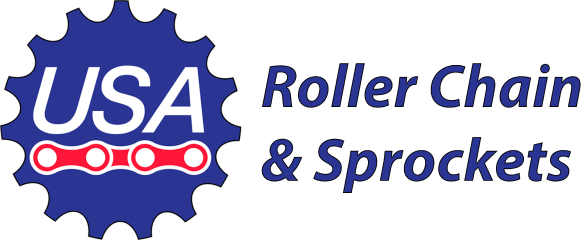How to Shorten or Extend a Roller Chain: A Guide to Roller Chain Sizing
Steps:
🔗 What You Will Find In This Guide
🔗 When Does a Roller Chain Need Sizing?
🔗 When Chain Lengthening Is Not the Answer
🔗 When Shortening a Chain is Not Recommended
🔗 How to Shorten a Roller Chain

What You Will Find In This Guide
This process outlines the appropriate steps, sequenced correctly, required for shortening a new chain to your design or connecting two new strands of a roller chain to lengthen it. These directions apply specifically to single-strand roller chains and connecting links with slip-fit cover plates. Among other steps, you'll be connecting or disconnecting chain links. Basic directions for disconnecting and connecting will be provided. For more detailed guidance, please refer to our other publications, which we also link from this guide. While installing the chain on the drive isn't detailed here step-by-step, we provide links to best practices for reference.
When Does a Roller Chain Need Sizing?
Most commercially available roller chains come in standard lengths, ranging from 10 ft to 500 ft. However, these lengths are rarely suitable for direct installation. Cutting a chain to size for a more compact drive system or extending it for a longer conveyor are the most common procedures performed when the chain is not available in a pre-cut length.
When Chain Lengthening Is Not the Answer
There are two main situations where extending the length of a roller chain is not recommended:
- First, premature wear and breakage may occur, if you exceed a manufacturer-recommended maximum chain length. In this case it may be safer to reconsider the entire design of your drive system.
- Second, if you are adding a new segment to a chain that has already undergone multiple cycles of use, you need to be mindful about its condition. Significant stretch and wear of the old segment will create uneven load and accelerate wear on the new segment. The most reliable option for this scenario is to replace the entire chain with a new one of the correct length. This recommendation is not only limited to the chain itself - sprockets and other components may need to be inspected and replaced with new ones as well.
When Shortening a Chain is Not Recommended
Shortening a chain due to excessive slack is not recommended because it may lead to low efficiency and safety risks. If the chain can’t be replaced entirely, you may temporarily reduce its slack by installing an idler sprocket.
How to Shorten a Roller Chain
Step 1. Determine the proper link count for your drive system. It should be an even number, however in some circumstances it can be an odd number with the use of offset links.
Step 2. Source a new chain of the required ANSI or ISO link size.
Step 3. Uncoil the new chain on a workbench and inspect it for quality.
Step 4. Count the number of links you determined in step 1 on the new chain. For this step, make sure the first link you are counting from is a roller link (inner link) and the last link in the count should be a pin link (outer link). The last link is the link you will be removing. Mark the link you will be removing.
Step 5. Remove the link. We provide a high-level overview of roller chain link removal in this step. For detailed instructions please refer to these guides:
Here is a basic outline of the process:
- Depending on your chain type, grind off pin heads (riveted chain) or remove cotters (cottered chain).
- Push out both pins from the side plate using appropriate tools or pressing equipment.
- Discard the removed link because it is not reusable.
Remember to consult the linked guides for safety precautions and a detailed step-by-step breakdown.
How to Lengthen a Roller Chain
If your setup requires chain extension you will be typically adding a few links to the existing chain or connecting two standard length sections and cutting the chain later to a desired length (See the section on roller chain shortening in this guide).
Step 1. Determine the total number of links required by your drive or conveyor setup and the number of links to be added.
Step 2. When extending a used chain make sure its stretch and wear are within admissible limits. We recommend that a new chain is used when a replacement is needed.
Step 3. If you need to add only a few links, use spare roller links connected via additional master links. If you need to connect two separate sections of the chain, review the outline of the process below and refer to this guide for specific details and instructions:
Overview of the process:
- Pull the roller links from both chain sections together.
- Push the connecting link pins through the roller link bushings of the end links.
- Slide the cover plate over the pins and secure it with fasteners (typically, cotter pins or a spring clip).
Safety Tip: The rule of thumb for fastener installation is that its sharp ends should face away from the direction of travel.
Remember to consult the linked guide for a more comprehensive explanation and safety precautions.
Where to Find Further Guidance
With your chain now at the right length, it's ready for installation on your drive or conveyor using a master link. For detailed instructions on connecting the chain into a loop on your drive or conveyor, refer to our dedicated guide How to Connect a Roller Chain.
© USA Roller Chain & Sprocket. Any unauthorized publishing is prohibited.
